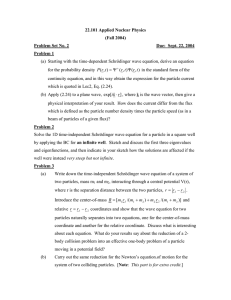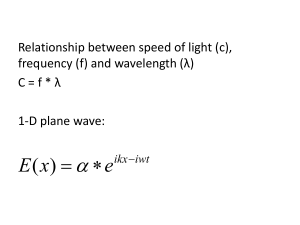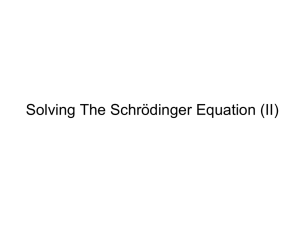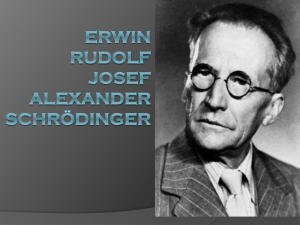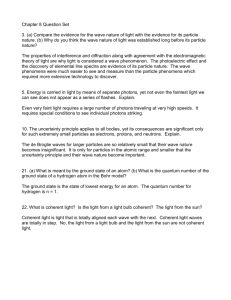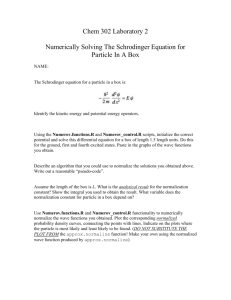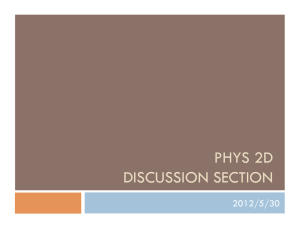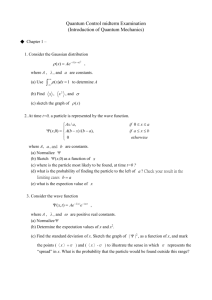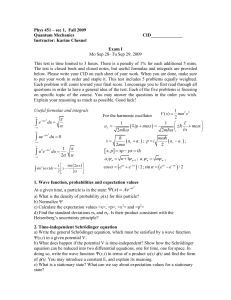Quantum Logic
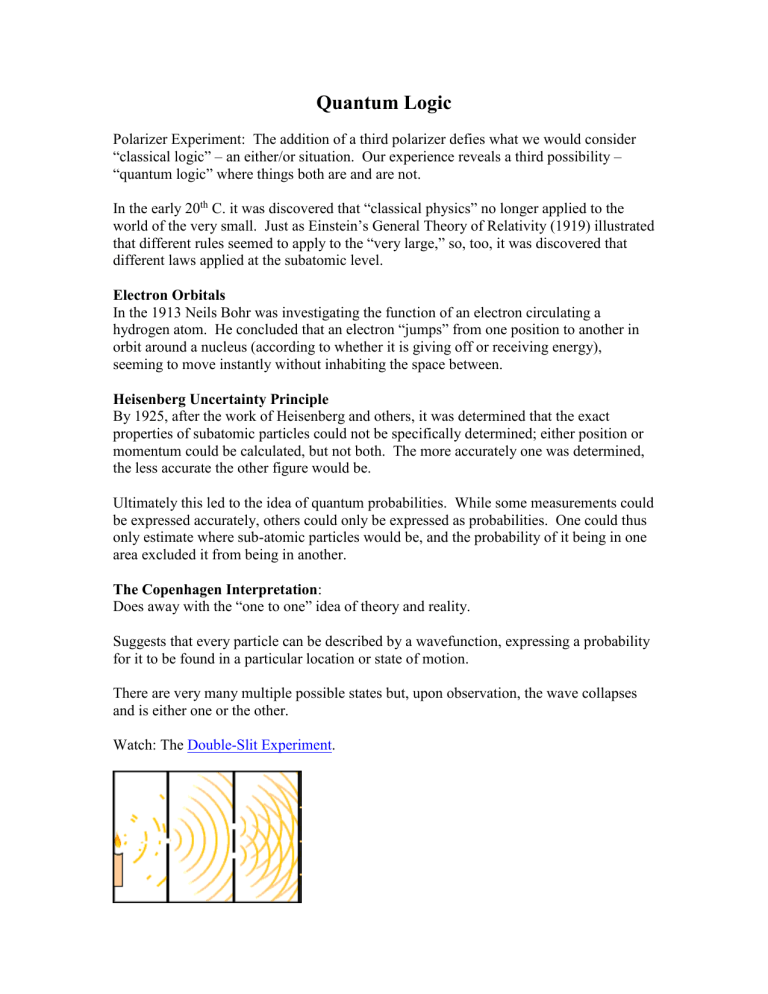
Quantum Logic
Polarizer Experiment: The addition of a third polarizer defies what we would consider
“classical logic” – an either/or situation. Our experience reveals a third possibility –
“quantum logic” where things both are and are not.
In the early 20 th
C. it was discovered that “classical physics” no longer applied to the world of the very small. Just as Einstein’s General Theory of Relativity (1919) illustrated that different rules seemed to apply to the “very large,” so, too, it was discovered that different laws applied at the subatomic level.
Electron Orbitals
In the 1913 Neils Bohr was investigating the function of an electron circulating a hydrogen atom. He concluded that an electron “jumps” from one position to another in orbit around a nucleus (according to whether it is giving off or receiving energy), seeming to move instantly without inhabiting the space between.
Heisenberg Uncertainty Principle
By 1925, after the work of Heisenberg and others, it was determined that the exact properties of subatomic particles could not be specifically determined; either position or momentum could be calculated, but not both. The more accurately one was determined, the less accurate the other figure would be.
Ultimately this led to the idea of quantum probabilities. While some measurements could be expressed accurately, others could only be expressed as probabilities. One could thus only estimate where sub-atomic particles would be, and the probability of it being in one area excluded it from being in another.
The Copenhagen Interpretation :
Does away with the “one to one” idea of theory and reality.
Suggests that every particle can be described by a wavefunction, expressing a probability for it to be found in a particular location or state of motion.
There are very many multiple possible states but, upon observation, the wave collapses and is either one or the other.
Watch: The Double-Slit Experiment .
Young had demonstrated in the 1800s that light operated light a wave, while those before
(Newton) and after (Einstein) argued it operated light a particle. It turns out that light seems to exhibit dual properties: behaving like a particle, yet also like a wave that creates interference patterns. More strikingly, this can be applied to all matter and individual electrons can be fired through the double slit experiment and show this same patterning.
Even when single photons or electrons are passed through a double slit, one at a time, the corresponding pattern shows interference. But how can one particle interfere with itself and/or “know” that there will be other photons?
Super-Positioning
The idea that things can actually seem to be in more than one place at once, based on probability waves. That is, reality isn’t like a particle (in one place or another) but more like a wave of co-existent possibilities. Things are not binary, as in on or off. But can be both on and off at the same time.
Most oddly, however, upon direct observation , the wave pattern seems to disappear.
The act of observing destroys super-positioning (collapses the wave function) and creates a binary type of effect – it is either one or the other, but not both.
Schrödinger’s Cat Thought Experiment
To try and show the ridiculousness of such a claim, Schrödinger hypothesised a cat in a box. In the box was a Geiger counter and a particle that had a 50% of decaying. If it decayed, it would emit radioactivity, set off the Geiger counter, which would then cause a hammer to strike a bottle releasing a toxin that would kill the cat. If the particle did not decay, nothing would happen to the cat. Schrödinger was trying to illustrate the ridiculousness of the claim that a cat can be both dead and alive at the same time, with only the act of observing (lifting the top off the box) determining things one way or the other.
The Many Worlds Interpretation
There are multiple possible states but, upon observation, one is consolidated in one universe while the other is consolidated in another. i.e.
both possibilities continue, but not in the same world. It suggests that the waveform only collapses in one world, but continues in another; by extension this means that there are an infinite number of alternate universes where other things that haven’t happened in this one do happen…
The non-collapse theory was first proposed by Hugh Everett in 1957 (Everett
Interpretation) and a many-world interpretation expanded by Bryce Seligman DeWitt in the 1960s and 1970s.
The Many World Interpretation (MWI) is now commonly accepted in physics and philosophy and describes a state where there are multiple or parallel realities, all of which seem unique to its sentient inhabitants and who necessarily have no knowledge of the other universes/worlds/realities beyond the possibility that they may actually exist.
First quantum effects seen in visible object
New Scientist : March 17, 2010 http://www.newscientist.com/article/dn18669-first-quantum-effects-seen-in-visibleobject.html

